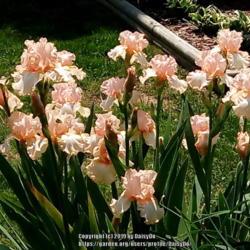Yes, William. Now you've noticed a difference ! Like I mentioned above..Unless, your garden soil has entirely poor drainage, or "your precipitation in summer, is rather to the extreme.''.
My meaning ,of precipitation ," rather to the extreme" is just that, which is well above average. Which, as in William's case that is exactly what happened , in 2017, "in the record wet summer."
Deep & regular irrigation, leads to longer deeper roots. Like I tried to explain, compared to treating them, as though they are shallow rooted & watering accordingly, because that's what you will tend to see them appear to grow like & gives you an appearance, which causes you to think, that is just exactly how they grow , which is almost a direct result of those planting & watering, methods, including low precipitation.
I would much prefer sandy soil, than to heavy clay. This has been a rather very dry summer here , yet in years where rainfall can be frequent, with heavy summer downpours, then it is much different & some people specifically bring in top soil, to make raised beds, simply because of that. Using a raised bed, still improves drainage & while also can help prevent root rot, which may lead to the rhizome itself, to begin rotting. Lacking that,or ability to deeply dig a bed, & having hard dry soil in summer, can be "worked around" by preparing ahead of time, when soil is moist & workable & amending, well in advance, or building a "raised bed.".. (Unless, it is a drought, year around.)
Most of all, you want to avoid compaction of nearby soil, by simply walking on it repeatedly as that tends to lead to heavy, dense soil, & after any decent amount of precipitation, which then in turn, causes it to becomes soggy or possibly even muddy, & that compaction, reduces aereation of the soil, which would have otherwise, helped to avoid root rot. Or, the precipitation, may simply become "run off", instead of helping it to be absorbed more deeply. Whereas, if it is deeply dug, amended & friable, then should more readily absorb water more deeply, while still avoiding lack of oxygenation.
